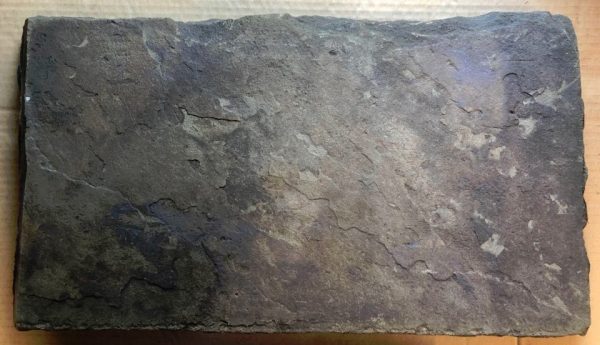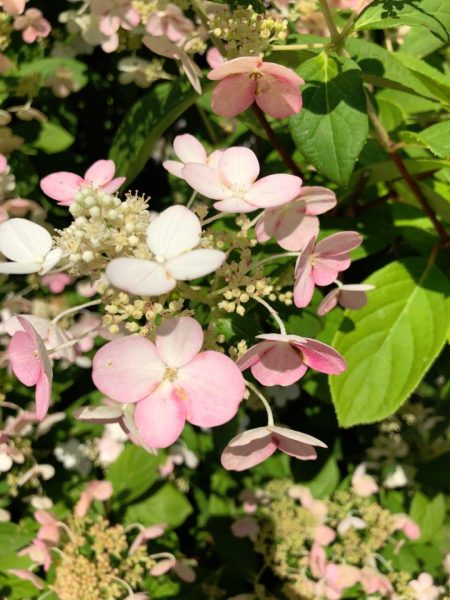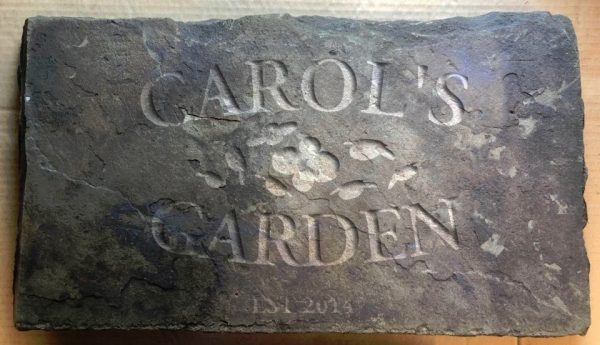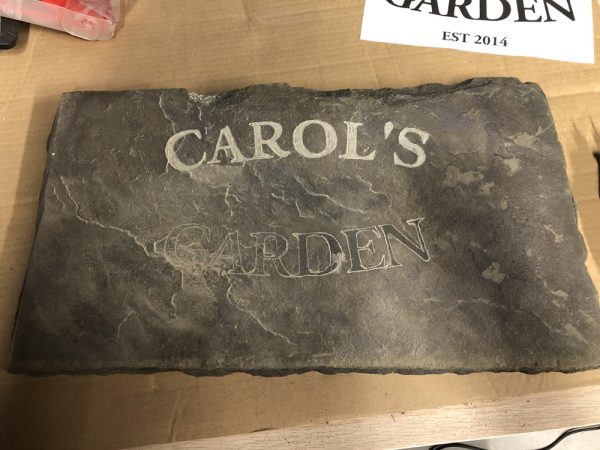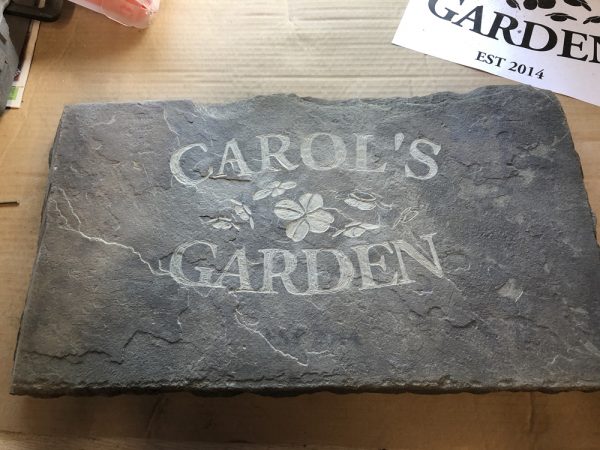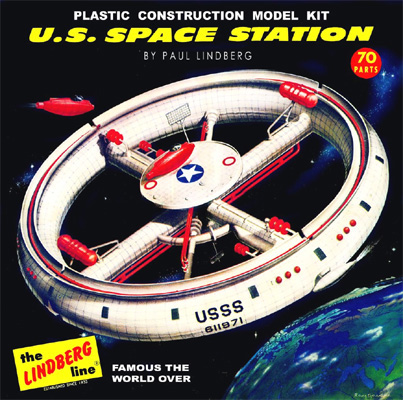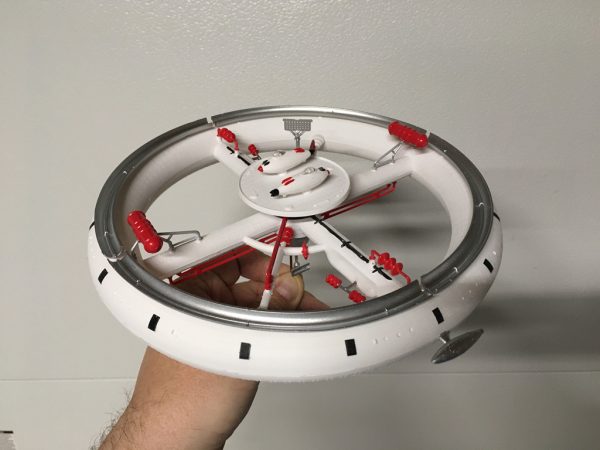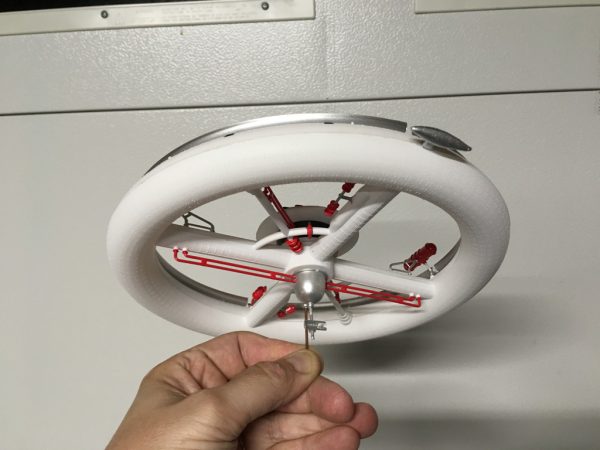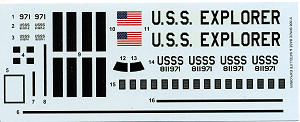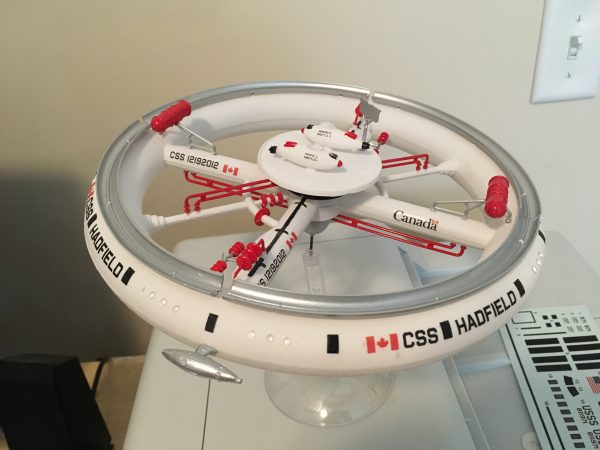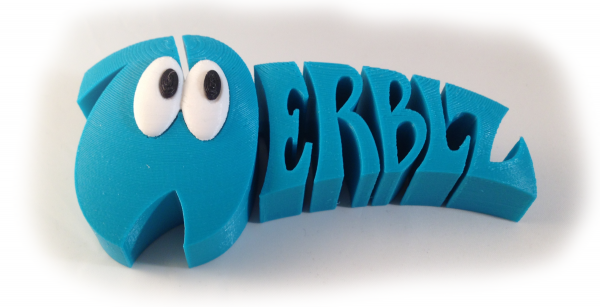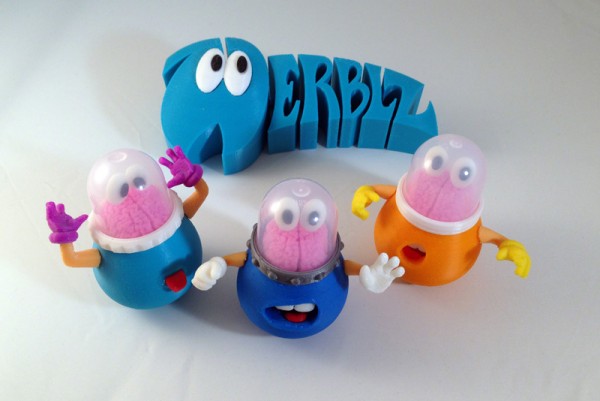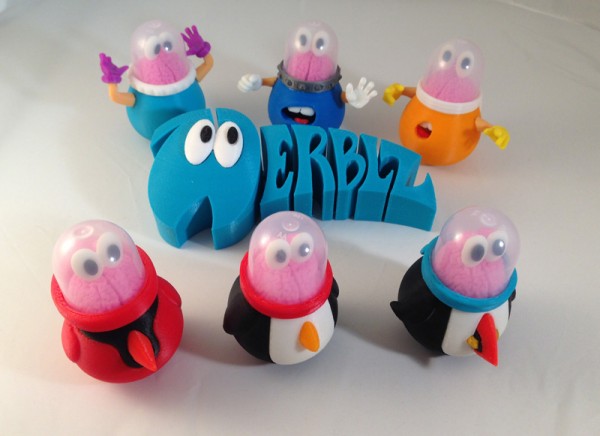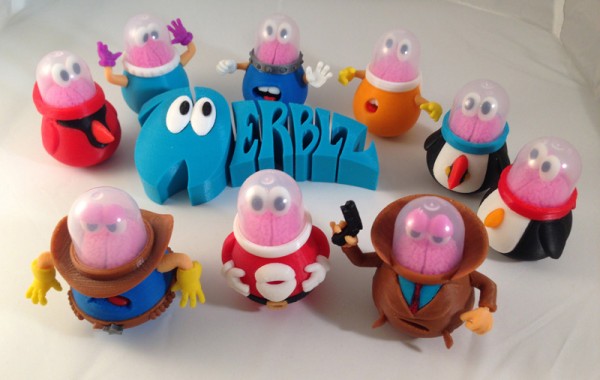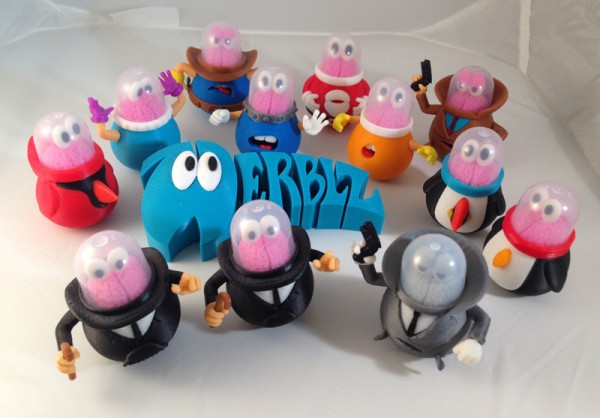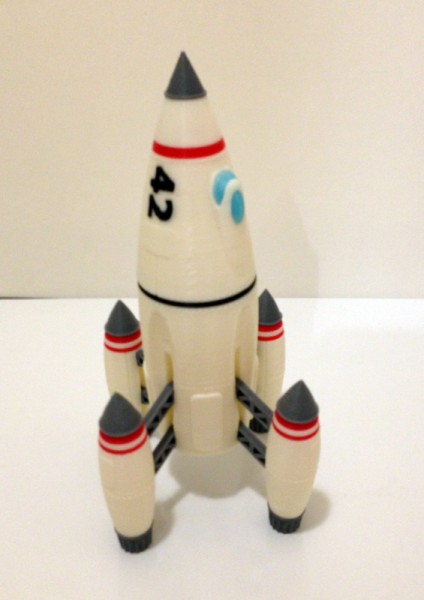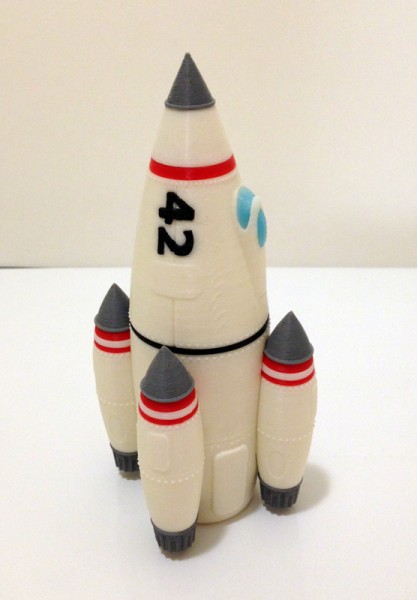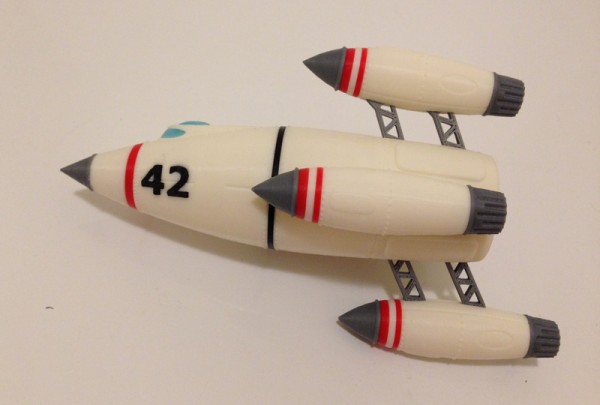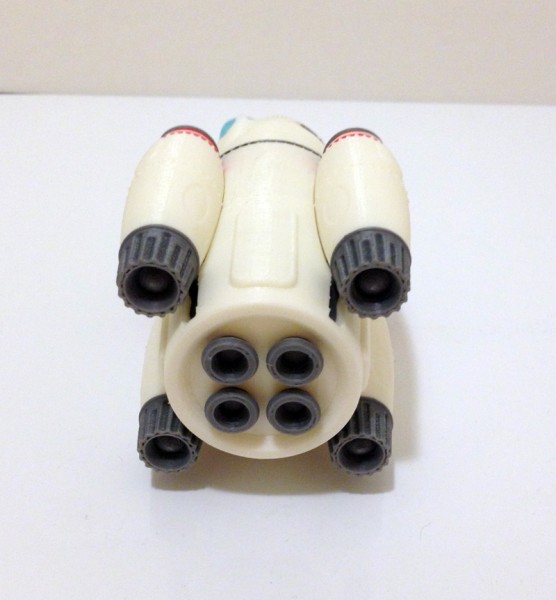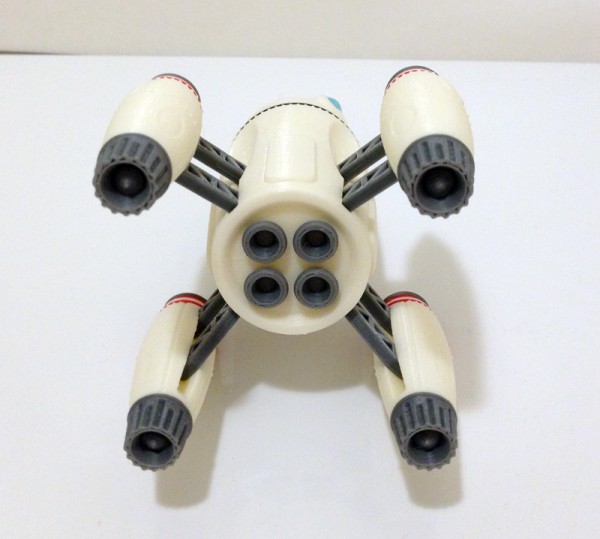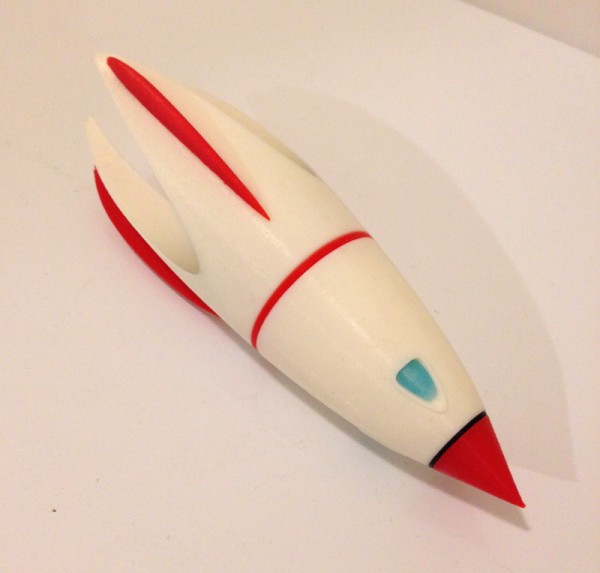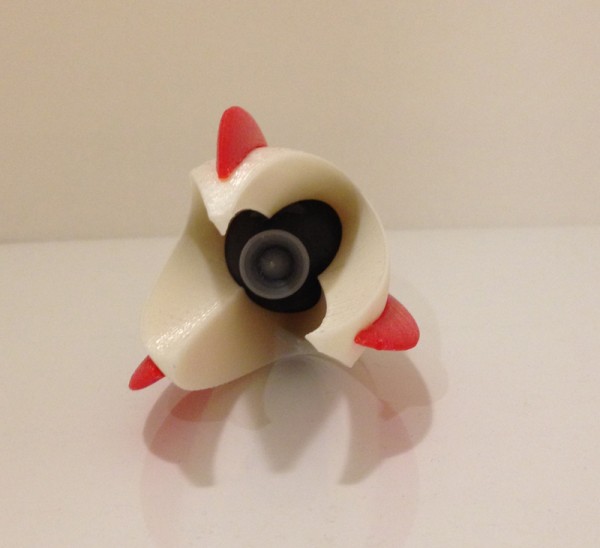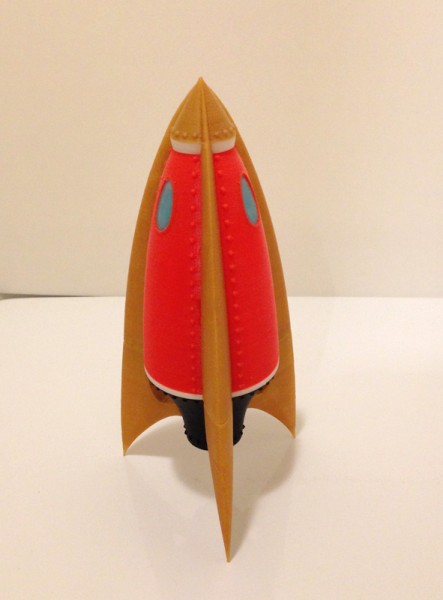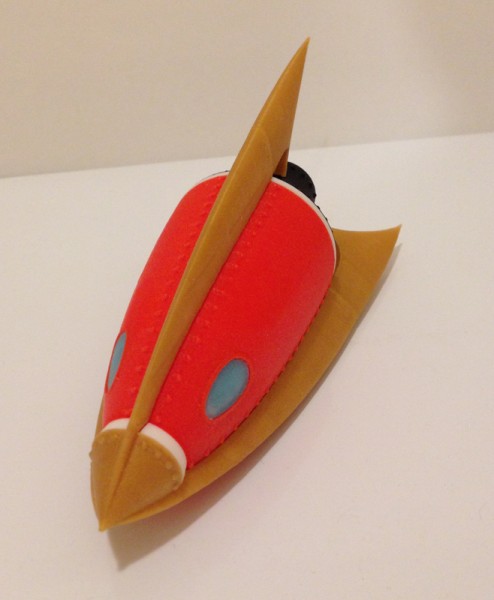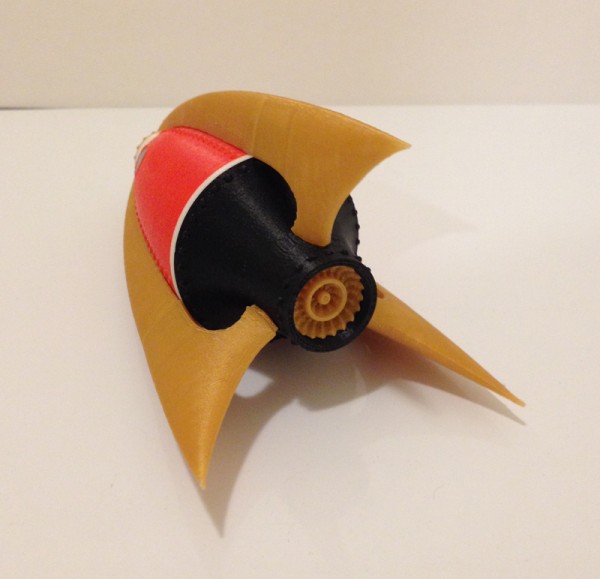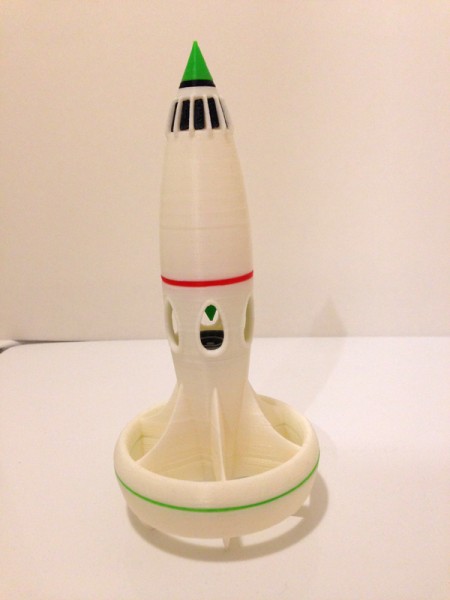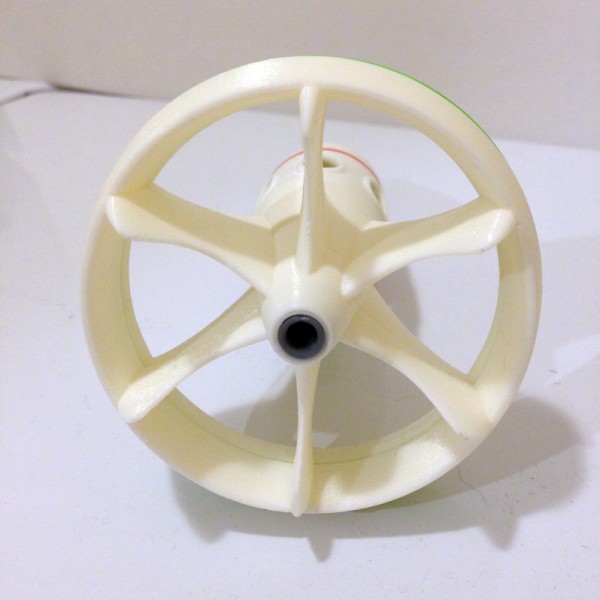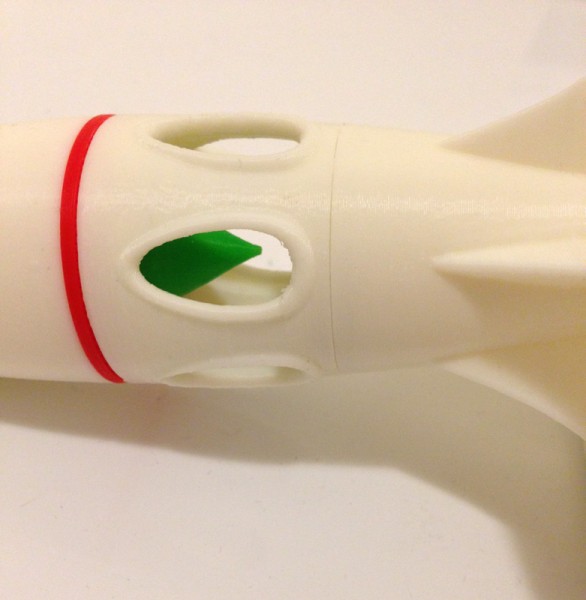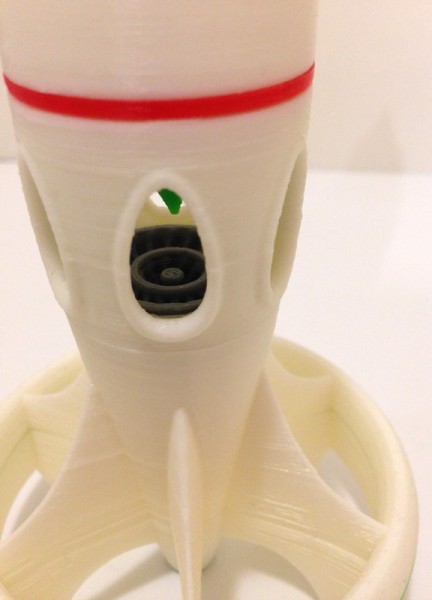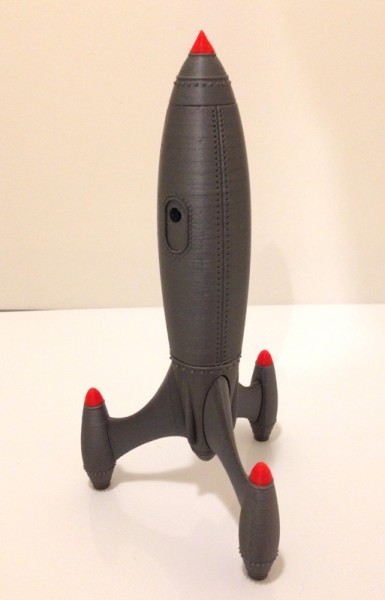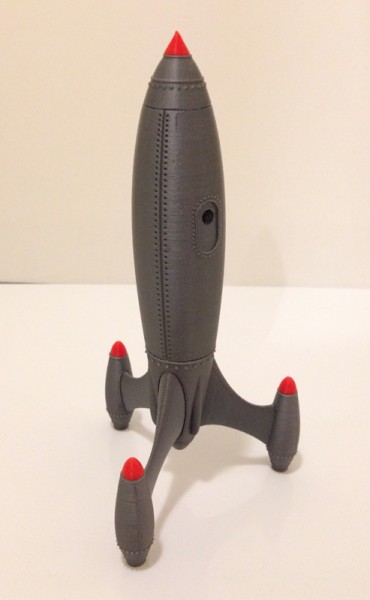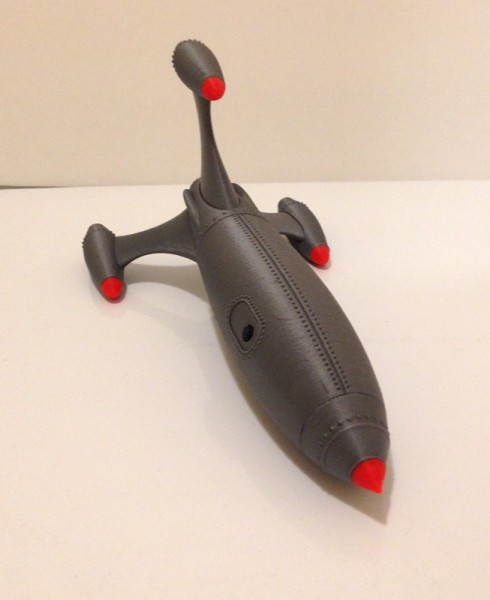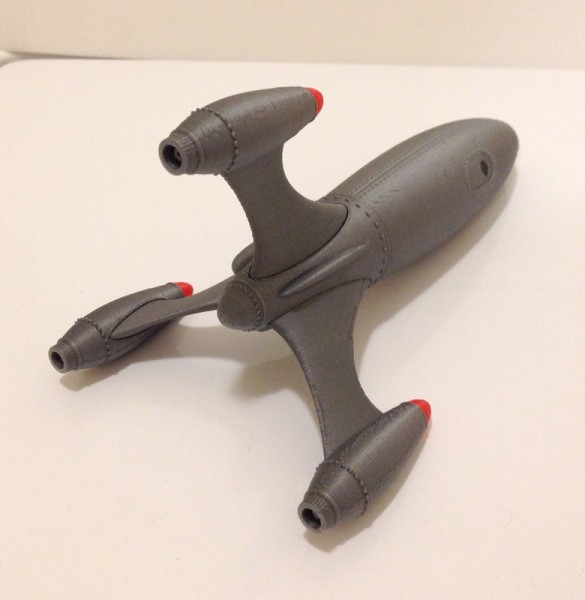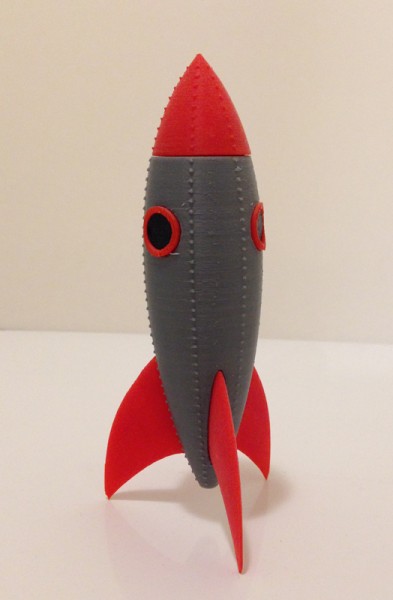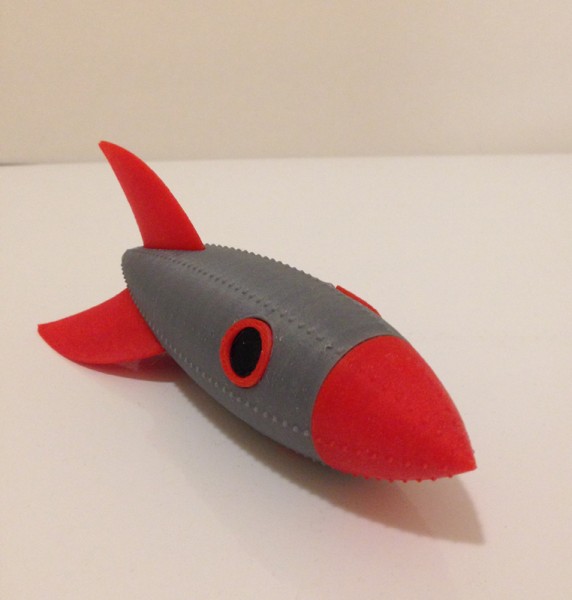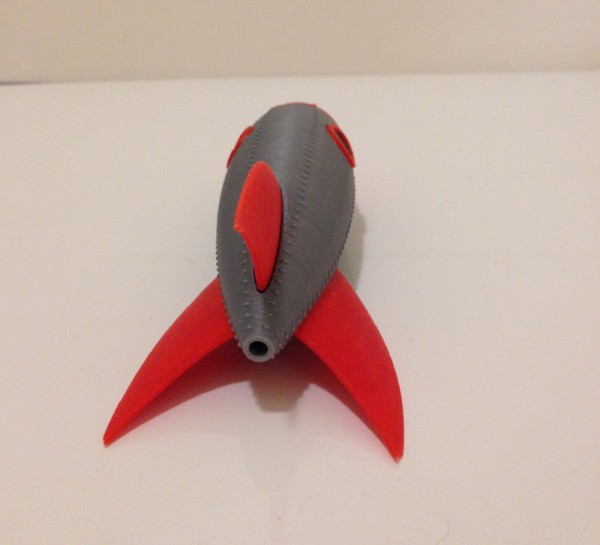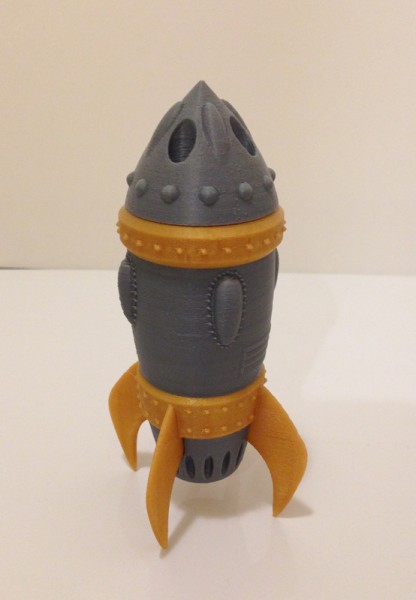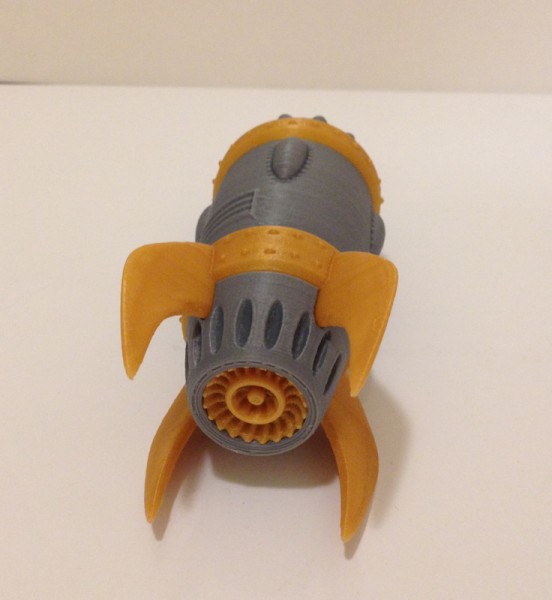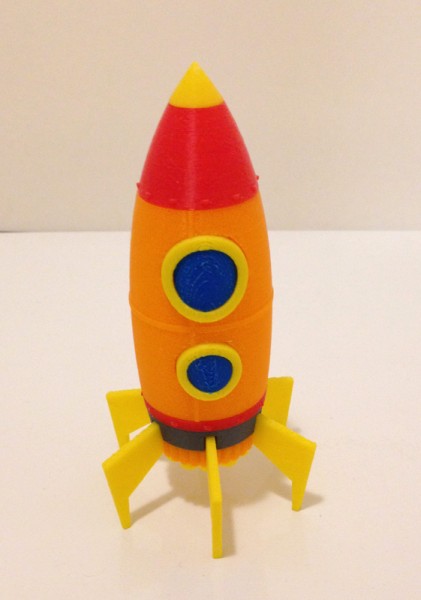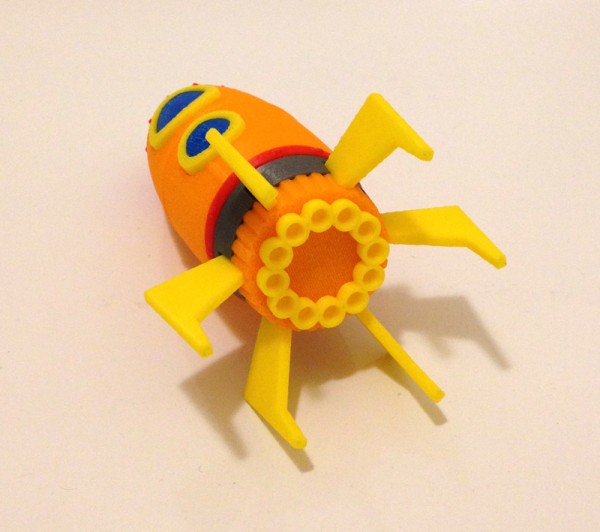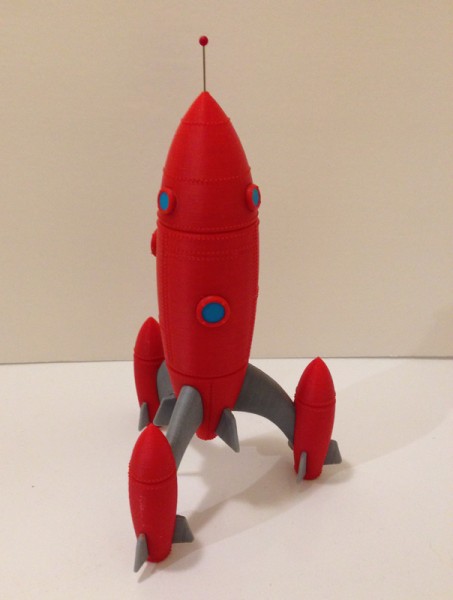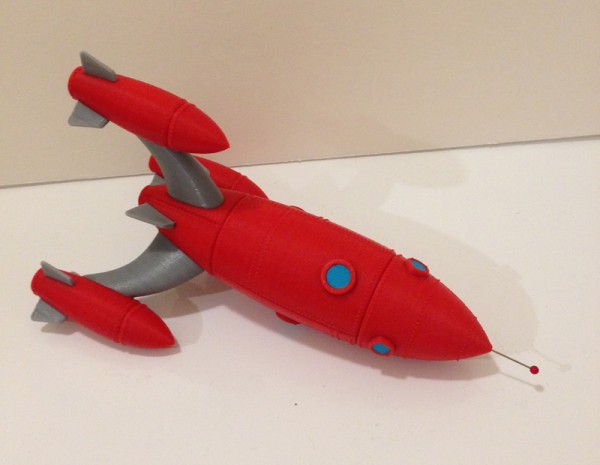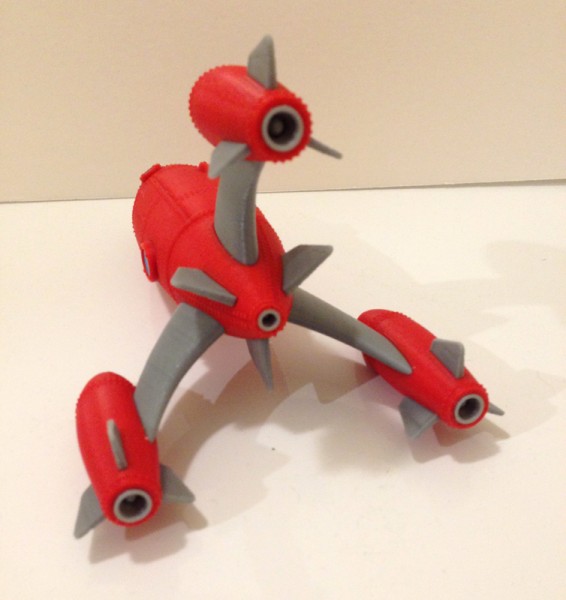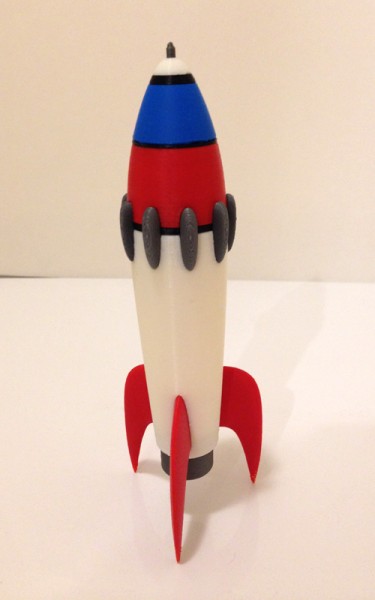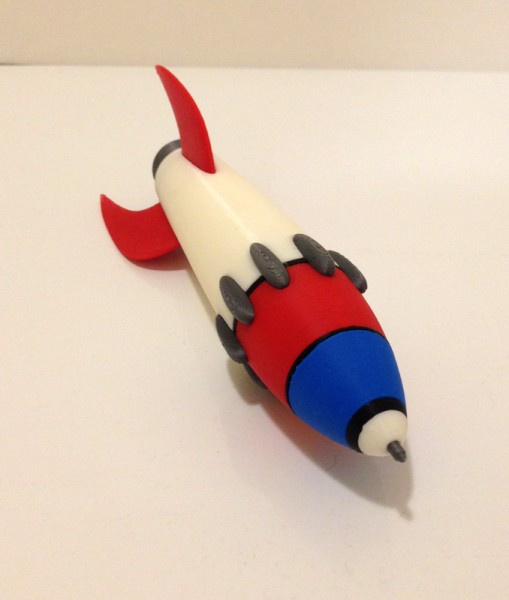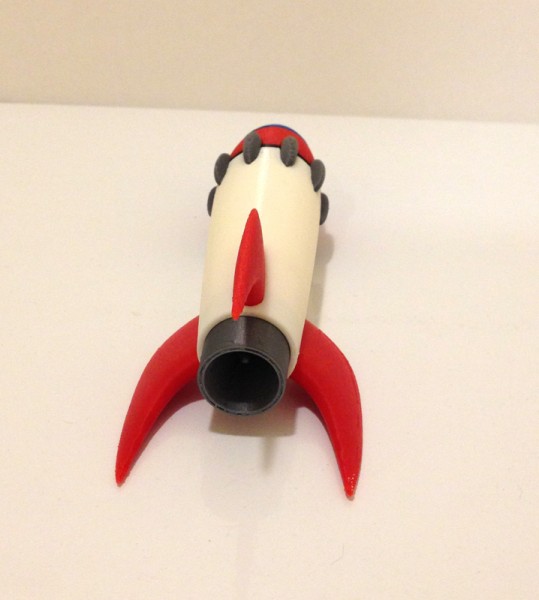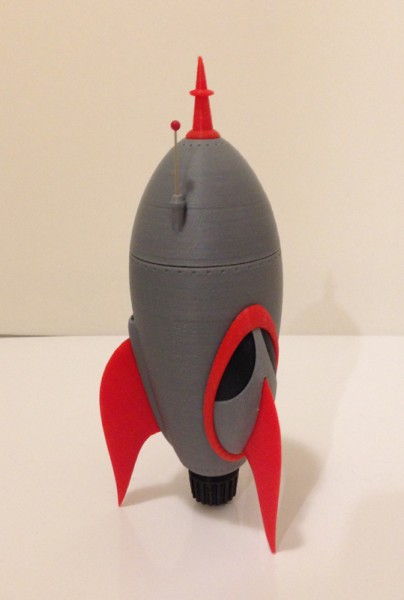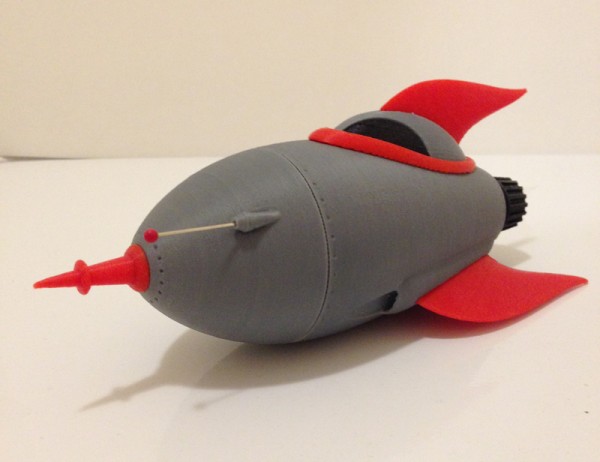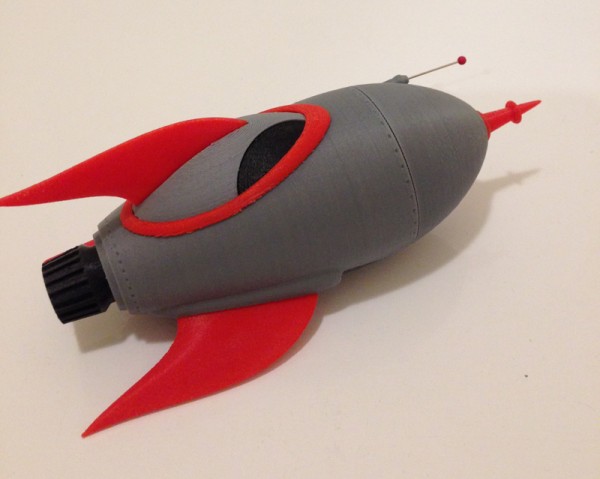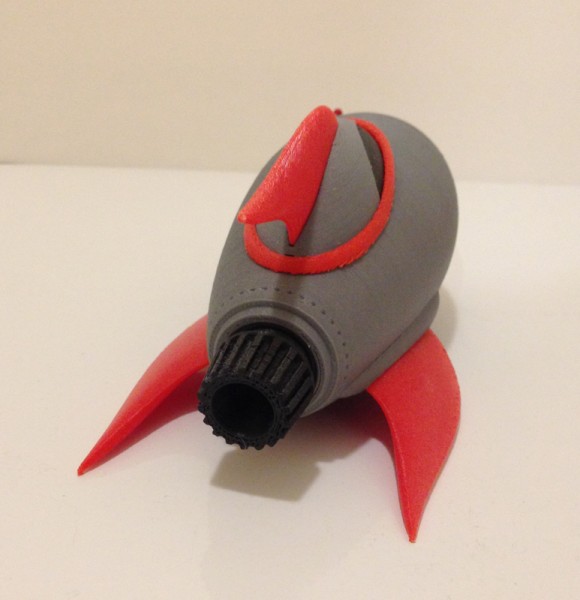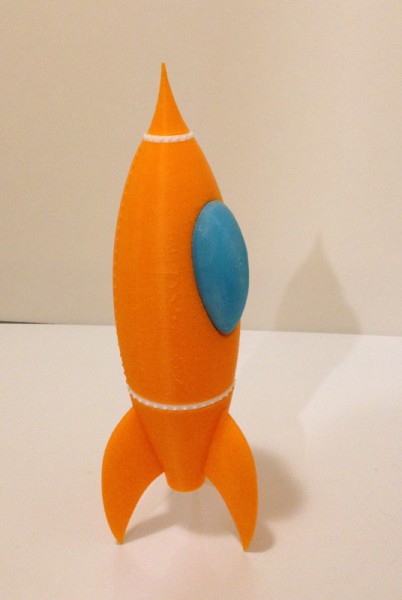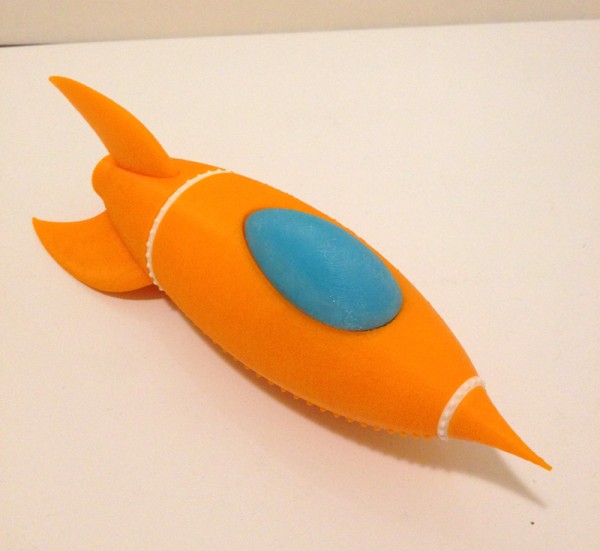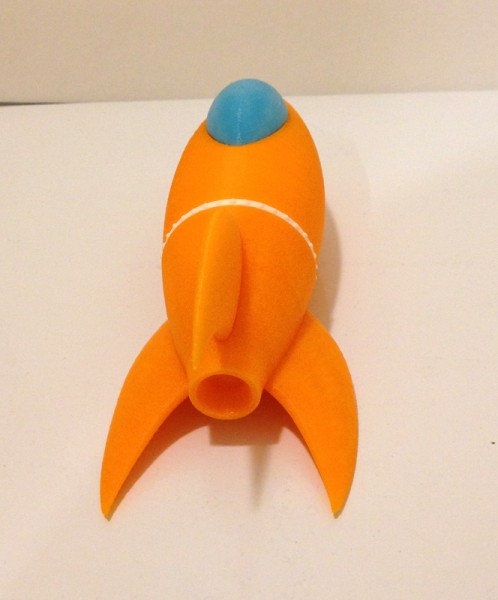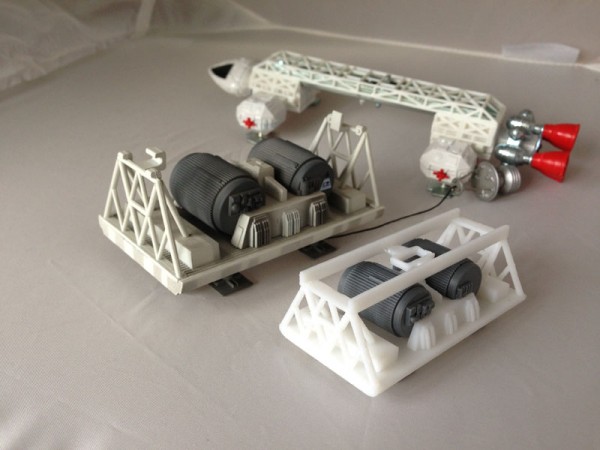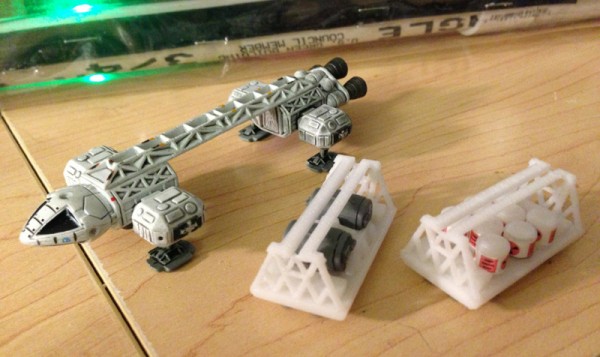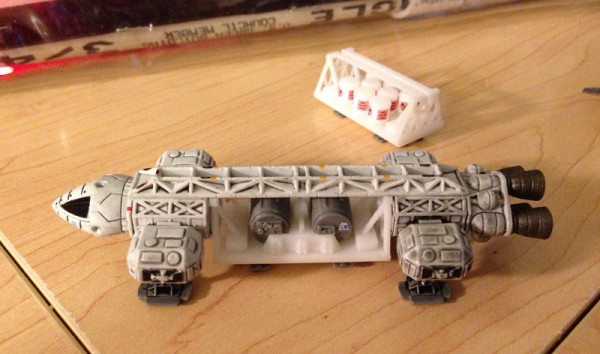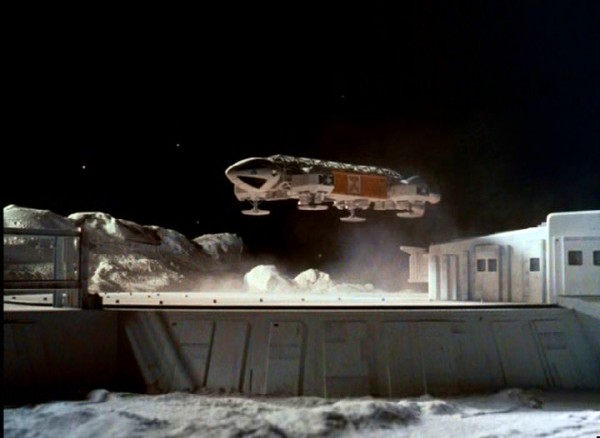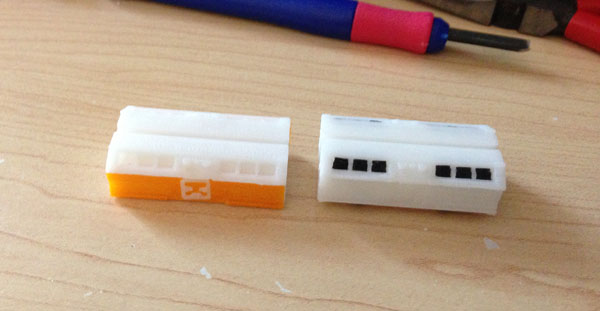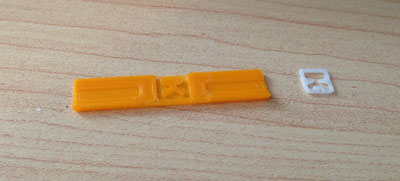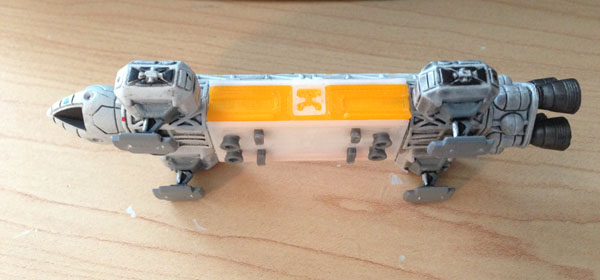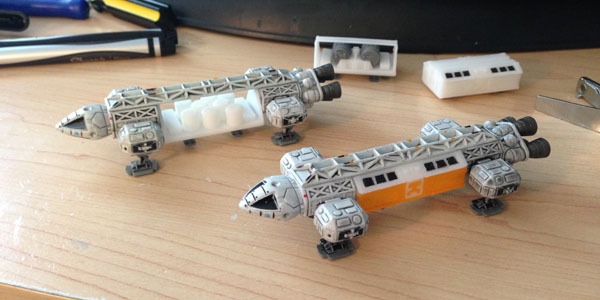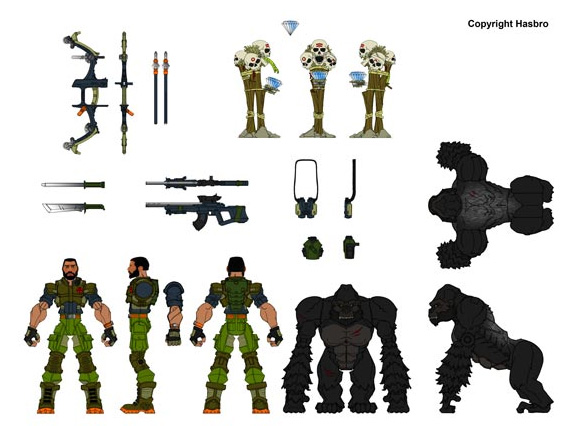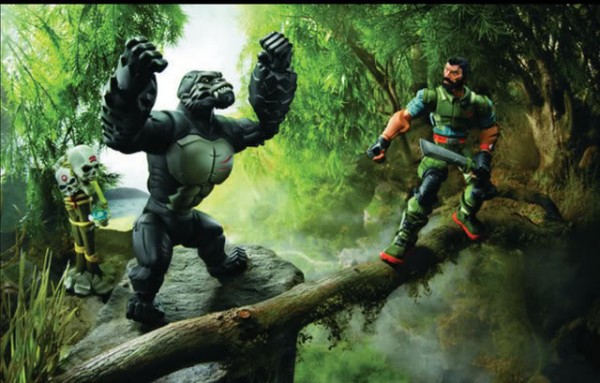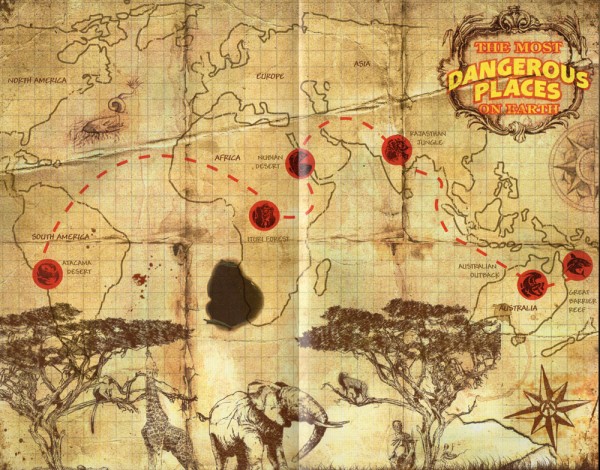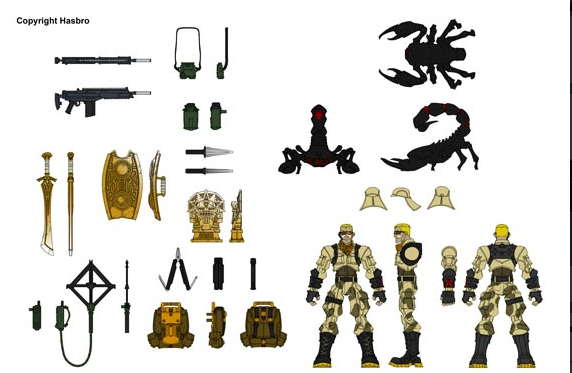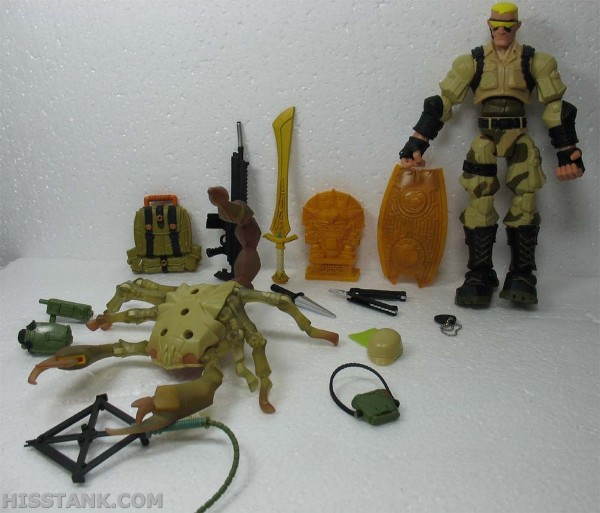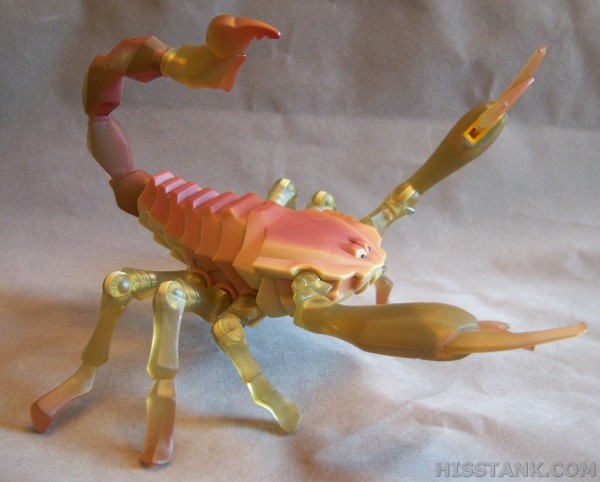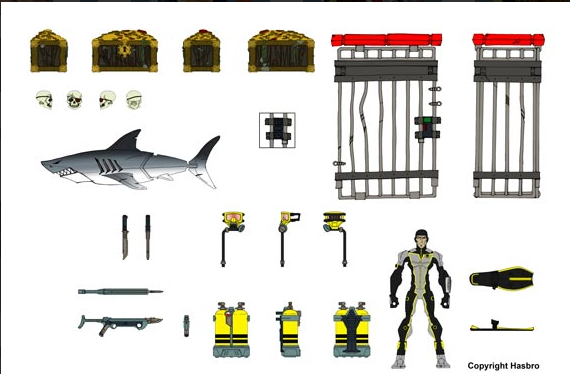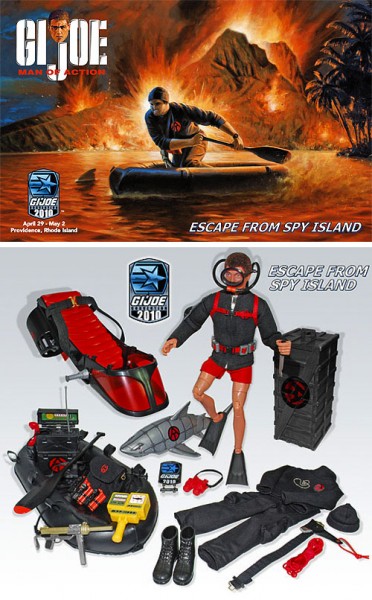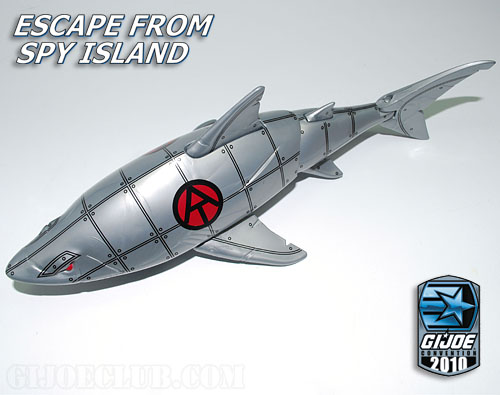RACCS – Ready Attachable Configurable Component System
Greg Brown and I usually communicate by text message. One day he texted me and said he had had this idea for something along the lines of the vintage GI Joe Trouble Shooter. Only this would be a flat platform that covered the cargo bay of the vintage Adventure Team Vehicle, or Trouble Shooter. Something like my Helijet rack but more versatile, more flexible.
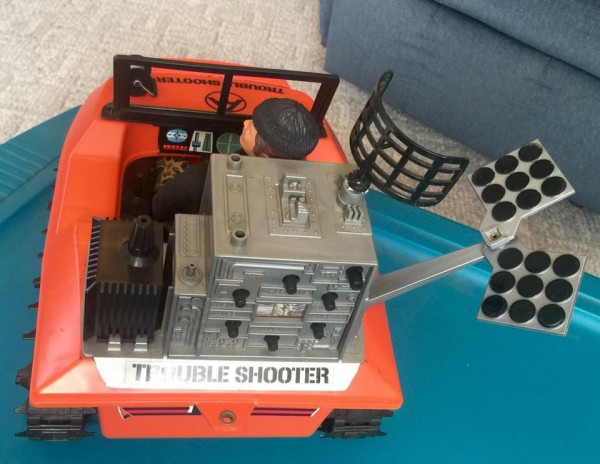
He said he envisioned something like the Trouble Shooter radio/radar pack which was this massive wonderful toy that slotted into the slots of the ATV. Only this would be modular, and allow various equipment modules to be snapped to the rack.
Immediately images came to mind. I sketched up something that spanned the cargo bay’s top area, and snapped in using the holes in the ATV.
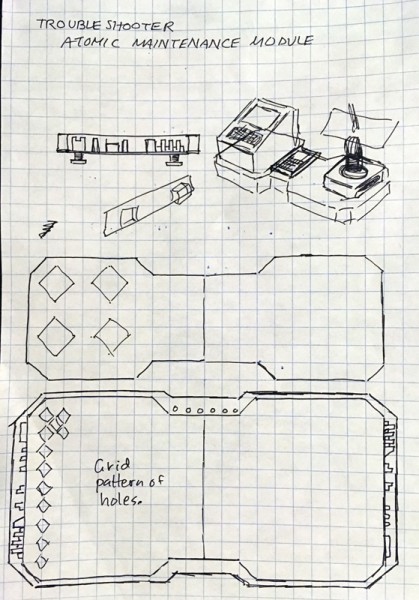
But it had to be able to have multiple various modules connected to it. So I skteched up a grid design figuring I’d connect modules using square pegs. Modules could be slotted onto the platform, as many as would fit, completely configurable by the user.
Greg looked at the sketch I sent and declared I was reading his mind. (He has said this on more than one occasion as he pitched design ideas my way.)
I test-printed a version of the platform (which we still had not named) and it slotted nicely to the ATV.
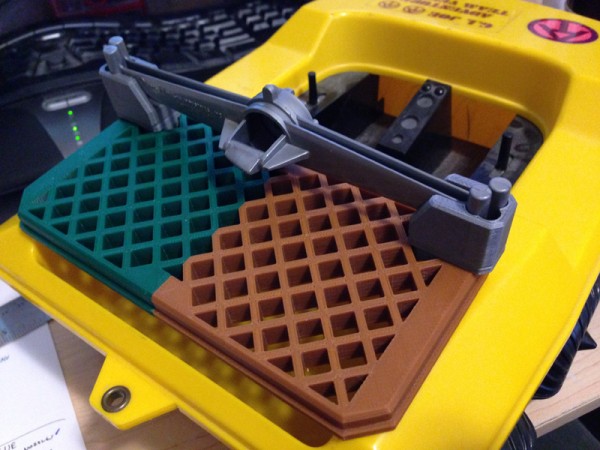
Then Greg asked if it could tilt up like a car trunk. Immediately I started sketching an idea for a hinge that would fit between the ATV and the platform seamlessly. It just might work!
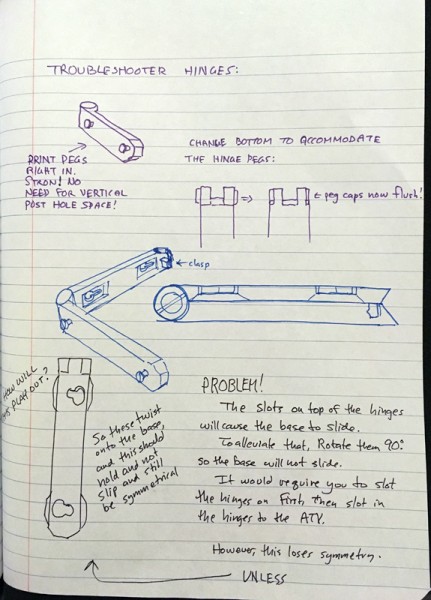
Here’s where the rapid prototyping made possible by 3D printing comes in very handy – when I slotted the hinges to the ATV and then the platform to the hinges, any forward movement of the platform would cause it or the hinges to slip forward.
I was flumoxed. How was I going to prevent this kind of slippage.
Well, thought I. What if I rotated the slots on one part of the hinges sideways? That way the platform would not be able to be pushed forward on the hinges. And the hinges themselves fitted pretty tightly to the ATV.
The result was that you had to snap the hinges onto the platform by rotating them a bit, but once locked on, and the hinges attached to an ATV, that platform wasn’t slipping anywhere!
And so the platform was nearly perfected.
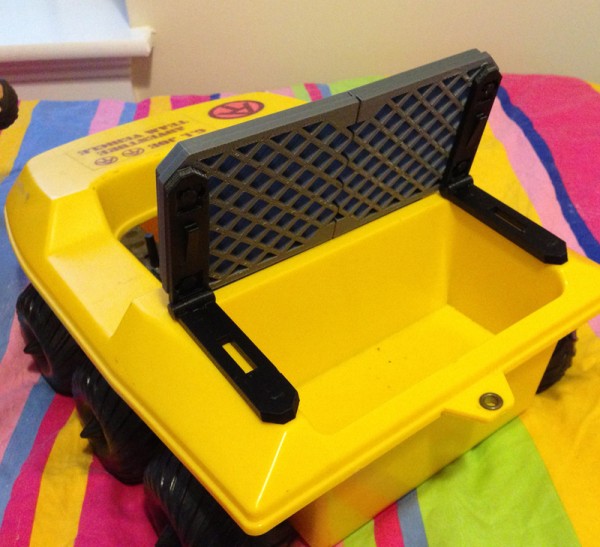
But I had a problem: my printer has a build volume of about 13.5cm x 13.5cm x 13.5cm. A 5 inch cube. The ATV’s cargo hold is wider than that. The platform would have to be printed in two pieces.
Immediately my symmetry-loving brain saw a way to make this platform work with two identical halves which snapped together. I was incredibly excited!
So I created a tab and slot for the platform which allowed for two identical parts to fit together perfectly, and still slot onto the ATV like normal.
Huge win!
Greg coined the term RACCS which is an acronym for “Ready Attachable Configurable Component System”.
This whole design process was going down around the release of the GI Joe Collector Club’s new freebie figure, a modern retake on Mike Power, Atomic Man. A new head sculpt on a vintage body with one arm and both legs made of clear plastic.
It also coincided with the re-emphasis of Cotswold’s own Cybernetic Explorers, figures made on repro vintage bodies, with various combinations of arms and legs molded in clear, which was getting some attention, and had its own outfit sets already developed.
This was a very popular figure, and club members couldn’t wait to get their hands on the new Mike Power.
The vintage Mike Power came with a two piece copter blade set that Mike held in his Kung Fu Grip, and a small wheel on his forearm let kids rotate that hand easily, so Mike Power could simply spin his hand and be a helicopter.
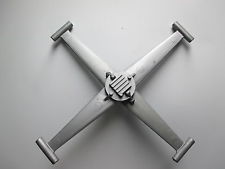
Greg noted that many collectors had these, and many would love to have them stored in a module made by me for this new platform design. So I created a two piece module pair that connected to the RACCS and the Atomic Man’s blade could fit snugly in place, carried by an ATV.
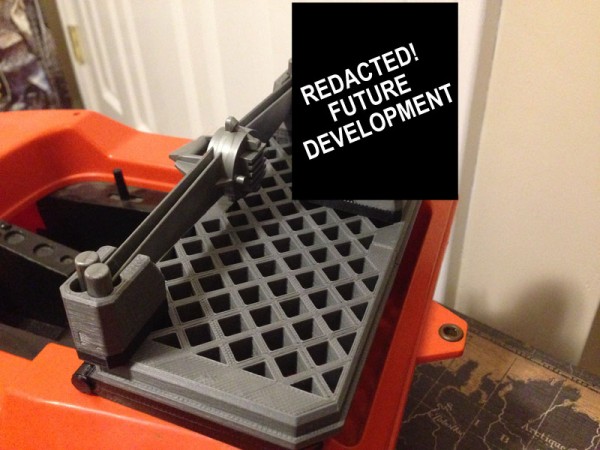
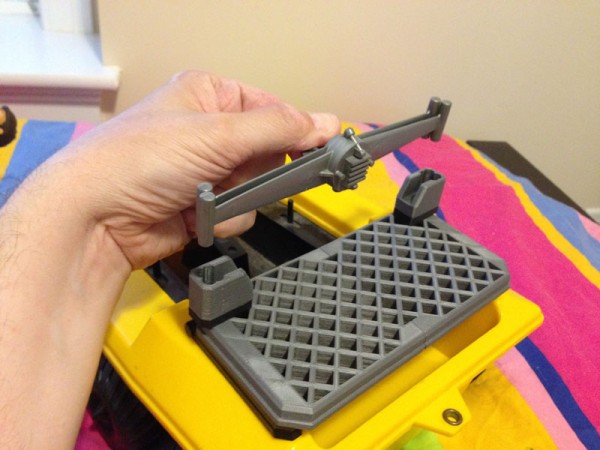
I also created a blueprint/instruction sheet for the RACCS platform, with reference to the blade holding module.

And so RACCS was introduced in the sixth catalog in 2016:

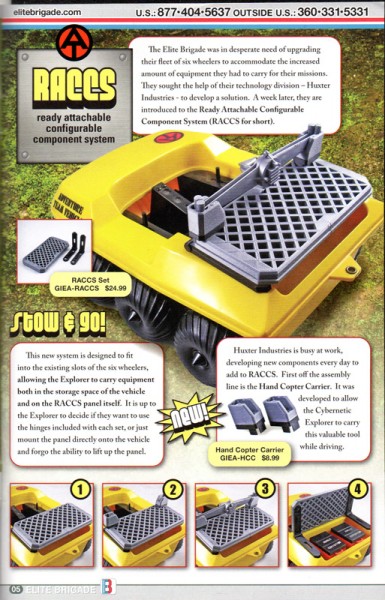
ATOMIC MAN / CYBERNETIC EXPLORER MOBILE CHARGING UNIT
By the time RACCS was announced in the catalog, Greg and I had already brainstormed a bunch of modular units that would fit on the platform, so you could configure your own adventure.
The next one up was to be a Mobile Charging Unit so Mike Power or the Cybernetic Explorers could charge their bionics while on a mission.
I started sketching.
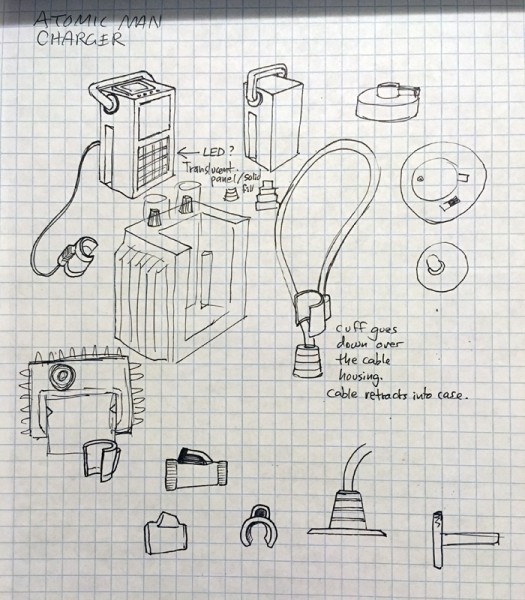
First thing I came up with was a box with ridges which would resemble heat sink blades to cool the atomic charging unit. Greg wanted a removable box the Explorer could take with him in case he needed an emergency charge, a box with a handle and its own charging coupler.
No problem. You can see the genesis of the idea in that sketch.
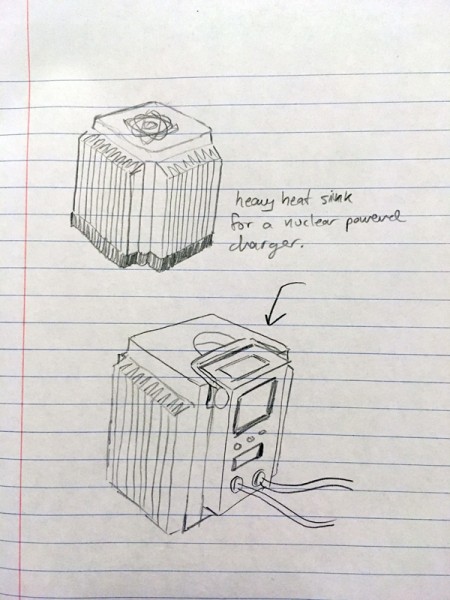
Which then got updated until I drew this:
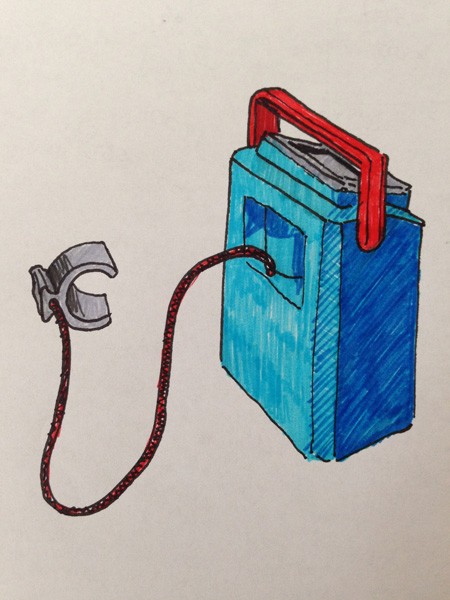
I ended up with a charging box which looked a bit like some of the parts of the original Trouble Shooter, which was no bad thing.

Even the nub I created for the cuff to store on resembled the Trouble Shooter module.
Then I modeled up and printed up a prototype.
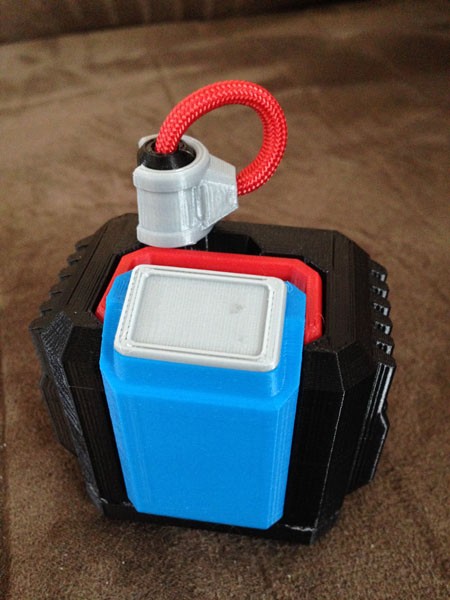
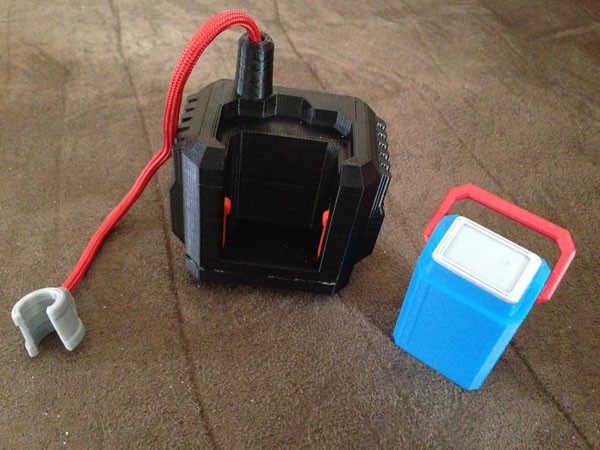
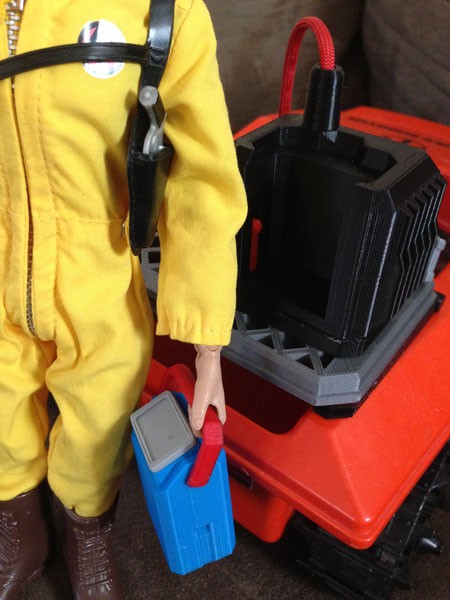
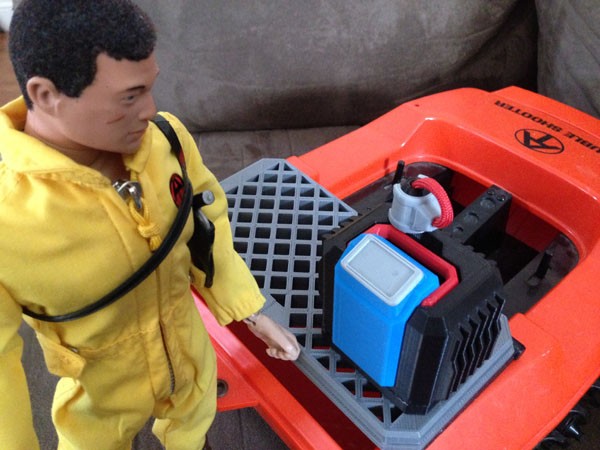

I found some red paracord to act as the main cable to the larger arm cuff. This would be a fast complete charger, charging up Mike’s bionics to full.
The smaller blue box (with the Cybernetic Explorer Atomic Logo on it) has a tilting handle, and a clip on the main box to hold it in place. Pull up and on the back is a cavity to store a smaller arm cuff, connected by a smaller, black cable.
Both of the cables store inside their boxes.
Originally the clips for the MCU would friction-fit into the RACCS slots like the Blade Holder units do. But while the blade holders are smaller and the pegs clustered closer together for a good friction fit, the MCU could not rely on friction. So I created a unique new spring-loaded clip system that worked easily with the original design. I simply created a slot in the bottom of the unit, slid the clip-spring part in, and a single screw connected it all together. The flexibility of the plastic itself allows for enough spring action for the module to clip nicely to RACCS and then remove again by pinching two tabs on the side.
I also came up with a blueprint for these.
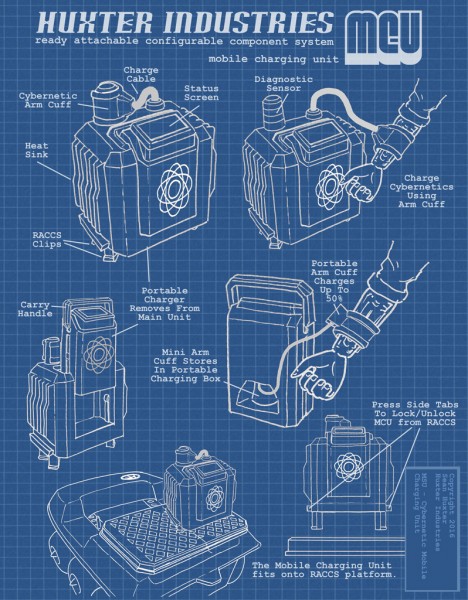
The catalog came out recently, and these items were made available for pre-order, with delivery in November.
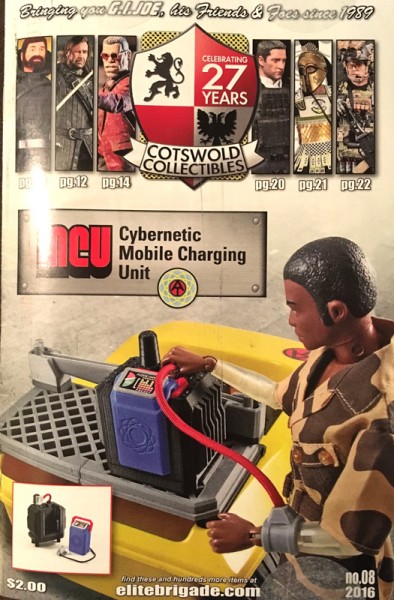

FOLDING TRI-COPTER
But what’s this?
Another item?
Greg asked me long before the Charging Unit to come up with a replacement blade for Mike Power and the Cybernetic Explorers to replace the blade that came with Mike, since a lot of owners of vintage Mikes may not have the blades. They tend to get lost.
But he wanted the helicopter blades to be able to fold back like an aircraft-carrier helicopter.

It turns out this was a hard challenge.
I could make the blades hinge, but 3D printing them consistently would be something I didn’t think I could guarantee.
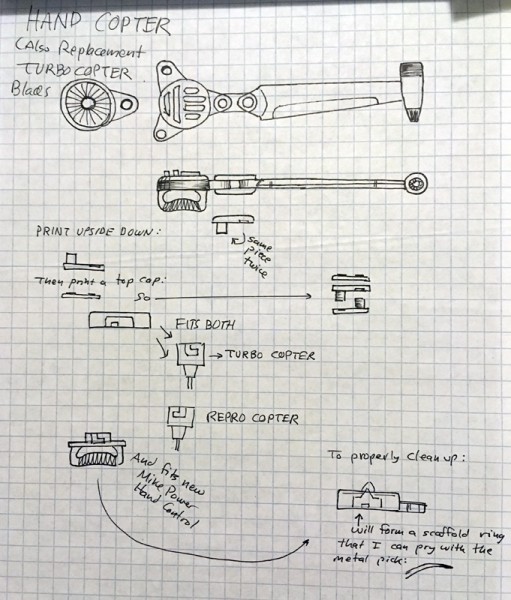
As you can see by the sketch, the hinge plates have to be symmetrical and fit together while snugly fitting into both the hub and each blade. If this was too snug, it would not move. Too loose, and it would not stay in place. It was tough. But I think I did it.
As a further benefit, I didn’t just fit a handle onto it that resembled Mike Power’s blade. Rather, I made that handle lock into the hub. Why?
As a sneaky extra feature, I made the hub compatible with vintage Turbo Copters!!
Here is a pic of an original Mike Power blade, along with my Tri Copter Blade, next to an original vintage Turbo Copter blade.
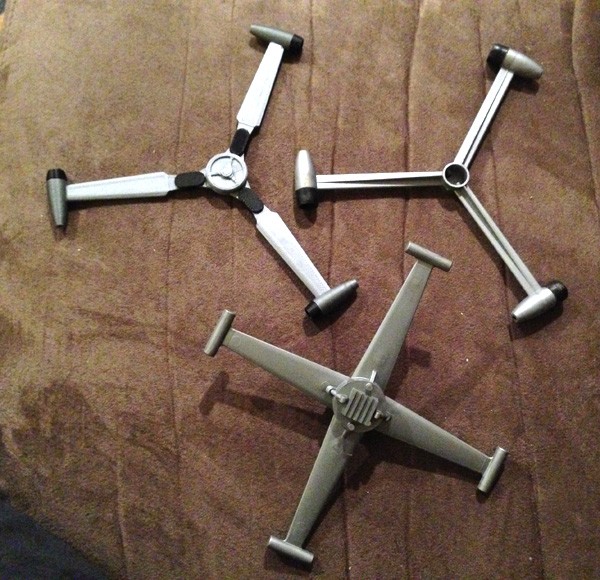
(Don’t worry. The Turbo Copter blade is turned upside down to show the hub opening. The turbo heads are facing the right direction on mine. (I hope.))
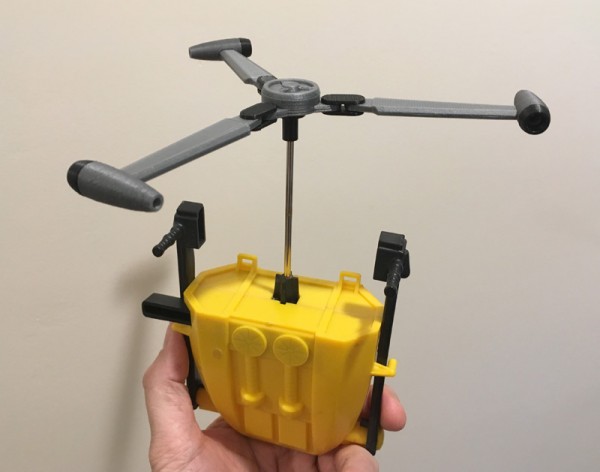
IMAGES FROM THE CATALOG AND WEB SITE
Fully extended: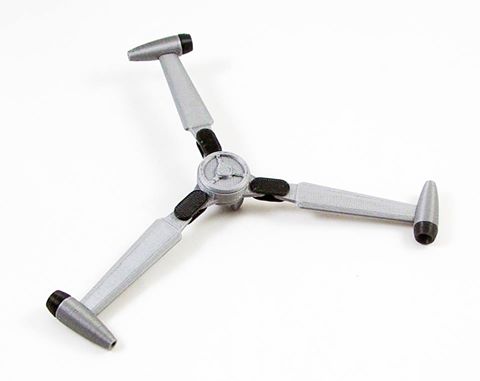
Cybernetic Explorer operating the blades, getting ready to take off: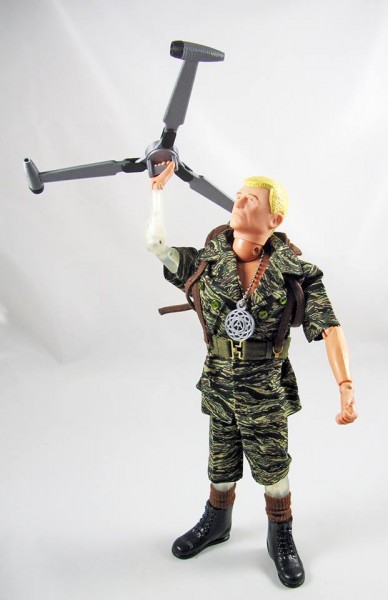
Stowing in backpack:
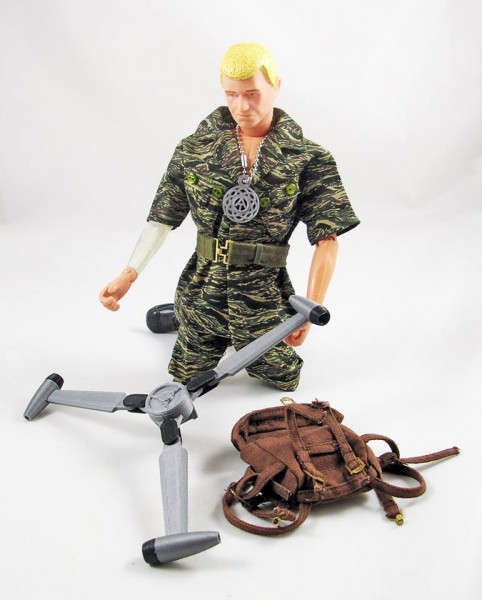
Folding blades:
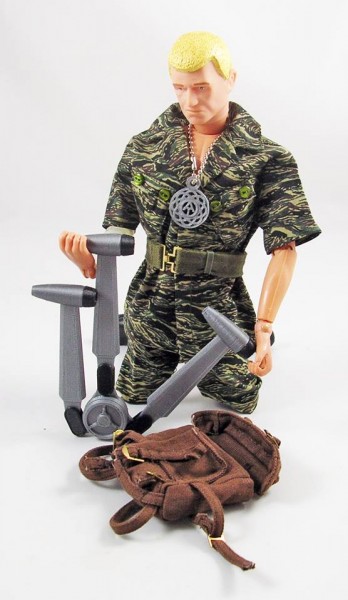
Stowing
: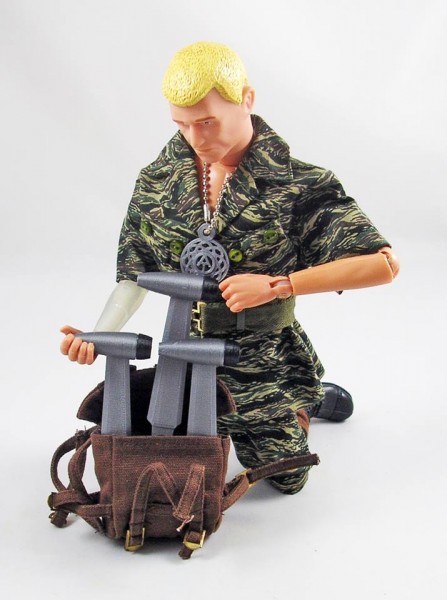
And going:
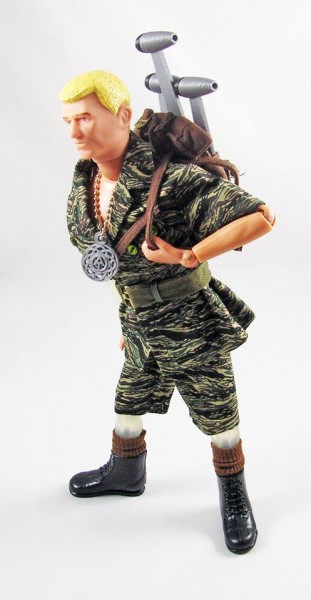
Seen here, attached to vintage Turbo Copter. It is designed to fit the black, yellow, green (Action Man) Turbo Copters. The more recent Hasbro reproduction (a lovely thing) will not fit, as the coupling is different, and rotates the wrong way.
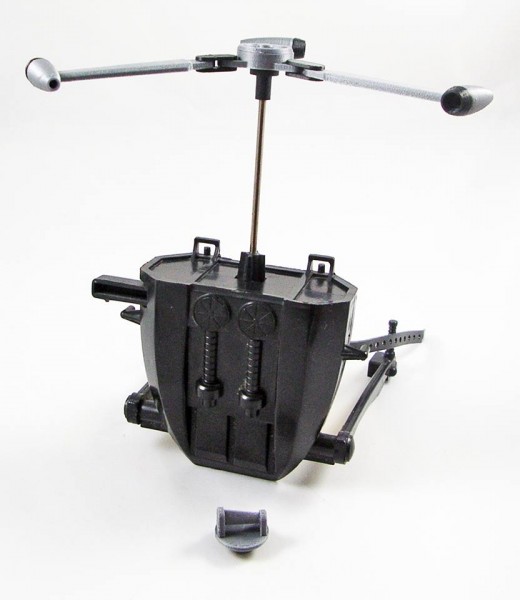
SO WHAT’S NEXT?
RACCS Spy Probe Dual Carriage System
